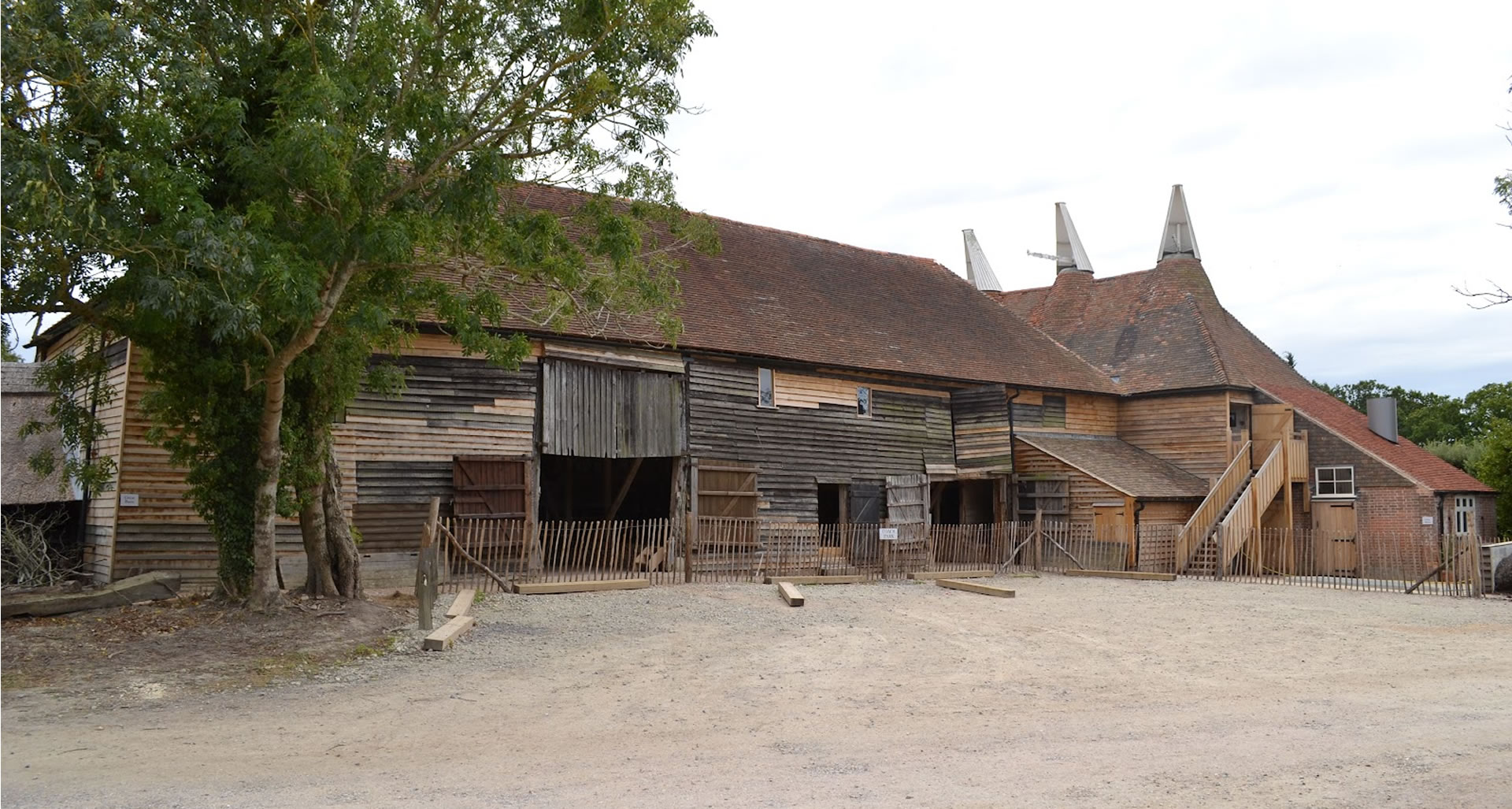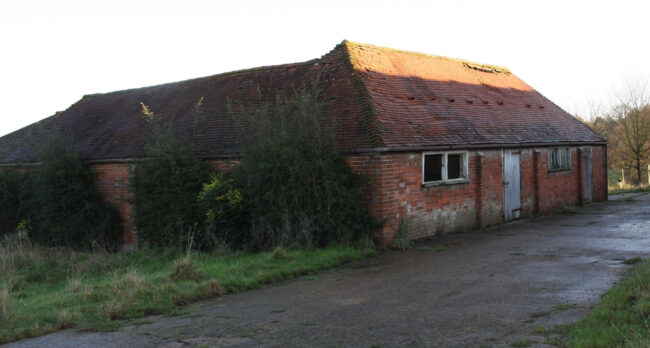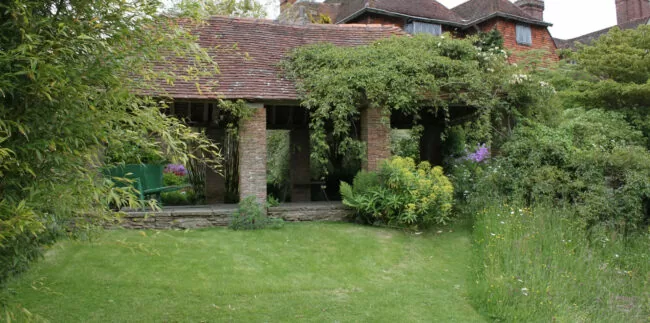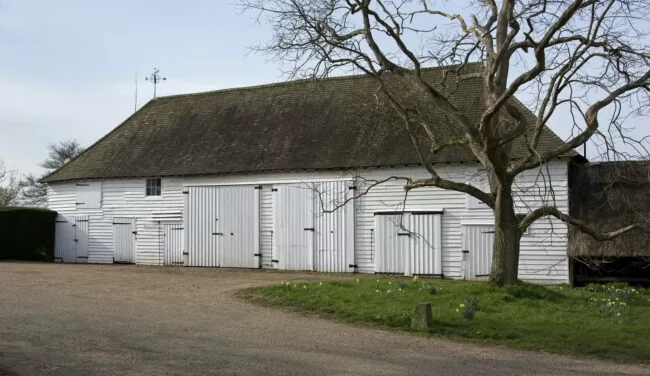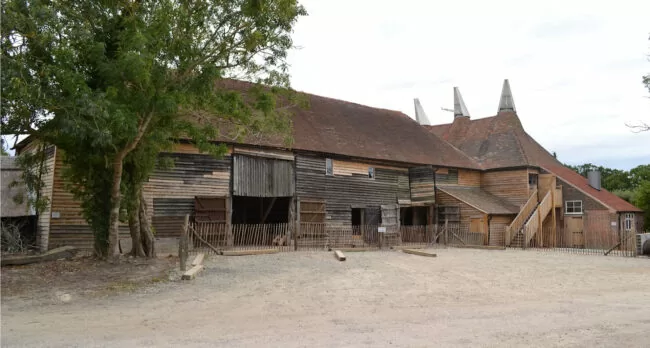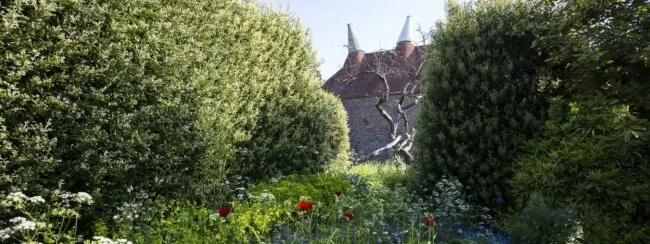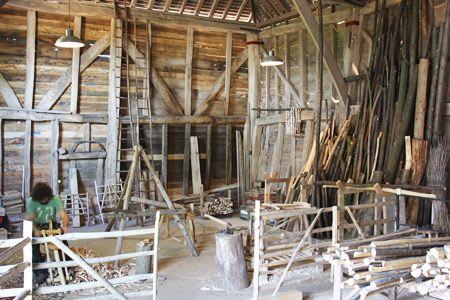The Great Barn
The principal barn at Great Dixter is five hundred years old and was built not long after the house.
At nearly 27 metres long and 8 metres wide it is a very large building by the standards of the day and was the centrepiece of the Manor’s farming operations. It was constructed entirely of locally-sourced materials: stout oak timbers for the frame, wattle and daub and weatherboarding for the walls, and straw thatch, probably, on the roof.
Over the centuries, as farming methods changed so too did the functions of the barn. To begin with, the barn was primarily about the storage and processing of the farm’s crops. As these were perishable and bulky, a large covered space was required so that they could be brought in and protected from the weather as soon as possible after harvest.
Two big sets of full height double doors on the south eastern, or what is now the garden, side allowed carts stacked high with sheaves of corn or piles of hay to be driven right in and unloaded. Empty, they could exit through the single height double doors in the opposite wall. Within, between each set of opposed double doors was a floor not of earth as elsewhere in the barn, but one laid with closely fitting oak planks.
These were threshing floors where sheaves were spread out in batches and then beaten or threshed, with a swinging stick known as a flail, to knock the grain from the ears of corn. It was then winnowed clean of husks and straw, collected and stored. It was slow, hard work that would keep the labourers occupied at slack times over the winter months.
In this traditional form of farming, crop growing went hand in hand with the keeping of livestock. Over the winter, for example, cattle turned the hay and corn they consumed into meat and also, importantly, manure which later went back on to the fields to fertilise them for the next round of crops. The barn was the hub of this operation so at its sunnier southern end – where the oast house now is – was once a lean-to shed where cattle were housed and probably had access beyond to an open yard. Racks in the end wall were supplied with feed from inside the barn. Here the cattle were fed with hay and corn while straw, which was continually being supplied as a by product of the threshing process, was used for their bedding. All of this resulted by the end of the winter in a build up within both shed and yard of a deep pile of rich manure for digging out and spreading on the fields. Other cattle sheds occupied what is now part of the garden and the nursery.
By the end of the nineteenth century, the Great Barn had been adapted for a variety purposes. Parts were being used for housing livestock, while other sections were given over to general storage of such things as feed, grain and implements, and one end was being used as the drying and pressing floor for the adjacent oast house.
When Nathaniel Lloyd purchased Great Dixter in 1910, he was not directly involved in farming and the land was let to a tenant. For aesthetic purposes and to allow for the creation and development of the gardens, it was necessary to relocate the centre of the farming operation further away from the house to a new set of buildings that were constructed 200 metres down the track on the other side of the road. This left the barn only with a few low priority storage functions, particularly once the oast ceased operating in the late 1930s.
The Great Barn is now used for green woodworking and is open to the visiting public.
